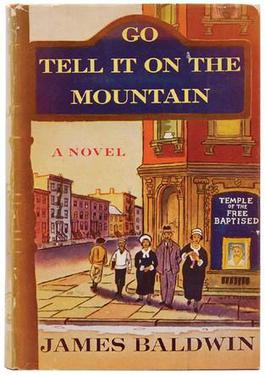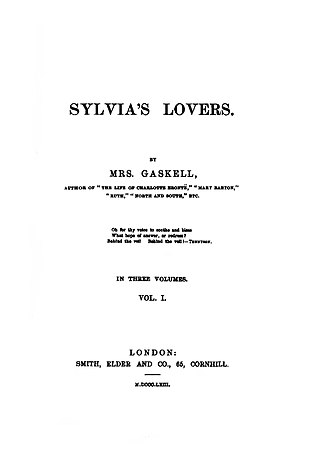
Mary Ann Evans, known by her pen name George Eliot, was an English novelist, poet, journalist, translator, and one of the leading writers of the Victorian era. She wrote seven novels: Adam Bede (1859), The Mill on the Floss (1860), Silas Marner (1861), Romola (1862–1863), Felix Holt, the Radical (1866), Middlemarch (1871–1872) and Daniel Deronda (1876). Like Charles Dickens and Thomas Hardy, she emerged from provincial England; most of her works are set there. Her works are known for their realism, psychological insight, sense of place and detailed depiction of the countryside.

Middlemarch, A Study of Provincial Life is a novel by English author Mary Anne Evans, who wrote as George Eliot. It appeared in eight installments (volumes) in 1871 and 1872. Set in Middlemarch, a fictional English Midlands town, in 1829 to 1832, it follows distinct, intersecting stories with many characters. Issues include the status of women, the nature of marriage, idealism, self-interest, religion, hypocrisy, political reform, and education. Despite comic elements, Middlemarch uses realism to encompass historical events: the 1832 Reform Act, early railways, and the accession of King William IV. It looks at medicine of the time and reactionary views in a settled community facing unwelcome change. Eliot began writing the two pieces that formed the novel in 1869–1870 and completed it in 1871. Initial reviews were mixed, but it is now seen widely as her best work and one of the great English novels.

The Mill on the Floss is a novel by English author George Eliot, first published in three volumes in 1860 by William Blackwood and Sons. The first American edition was published by Harper & Brothers, Publishers, New York.

Go Tell It on the Mountain is a 1953 semi-autobiographical novel by James Baldwin. It tells the story of John Grimes, an intelligent teenager in 1930s Harlem, and his relationship with his family and his church. The novel also reveals the back stories of John's mother, his biological father, and his violent, fanatically religious stepfather, Gabriel Grimes. The novel focuses on the role of the Pentecostal Church in the lives of African Americans, both as a negative source of repression and moral hypocrisy and a positive source of inspiration and community. In 1998, the Modern Library ranked Go Tell It on the Mountain 39th on its list of the 100 best English-language novels of the 20th century. Time magazine included the novel on its list of the 100 best English-language novels released from 1923 to 2005.

Adam Bede was the first novel by English author Mary Ann Evans, first published in 1859. It was published pseudonymously, even though Evans was a well-published and highly respected scholar of her time. The novel has remained in print ever since and is regularly used in university studies of 19th-century English literature. She described the novel as "a country story full of the breath of cows and scent of hay".

Countess Natalya "Natasha" Ilyinichna Rostova is a central fictional character in Leo Tolstoy's 1869 novel War and Peace. She is the beautiful daughter of Ilya Rostov, a loving, kind, and generous nobleman. Natasha is based on both Tanya Behrs, Tolstoy's sister-in-law, and Sophia Tolstaya, Tolstoy's wife.
Ellastone is a village in the East Staffordshire borough of Staffordshire, in the West Midlands of England. It is on the Staffordshire side of the River Dove and is directly opposite the village of Norbury in Derbyshire. It is between Uttoxeter and Ashbourne.

Victorian literature is English literature during the reign of Queen Victoria (1837–1901). The 19th century is considered by some to be the Golden Age of English Literature, especially for British novels. It was in the Victorian era that the novel became the leading literary genre in English. English writing from this era reflects the major transformations in most aspects of English life, from scientific, economic, and technological advances to changes in class structures and the role of religion in society. The number of new novels published each year increased from 100 at the start of the period to 1000 by the end of it. Famous novelists from this period include Charles Dickens, William Makepeace Thackeray, the three Brontë sisters, Elizabeth Gaskell, George Eliot, Thomas Hardy, and Rudyard Kipling.

Romola (1862–63) is a historical novel written by English author Mary Ann Evans under the pen name of George Eliot set in the fifteenth century. It is "a deep study of life in the city of Florence from an intellectual, artistic, religious, and social point of view". The story takes place amidst actual historical events during the Italian Renaissance, and includes in its plot several notable figures from Florentine history.

Hetty Sorrel is a major character in George Eliot's novel Adam Bede (1859).

The Bondwoman's Narrative is a novel by Hannah Crafts who claimed to have escaped from slavery in North Carolina. The manuscript was not authenticated and properly published until 2002. Some scholars believe that the novel was written between 1853 and 1861. It is one of the very first books by an African-American woman, others including the novel Our Nig by Harriet Wilson, published in 1859, and the autobiography Incidents in the Life of a Slave Girl by Harriet Jacobs, published in 1861.

Sylvia's Lovers (1863) is a novel by English author Elizabeth Gaskell, which she called "the saddest story I ever wrote".

Saints (1984) is a historical fiction novel by American writer Orson Scott Card. It tells the story of the fictional protagonist, Dinah Kirkham, a native of Manchester, England, who immigrates to the United States and becomes one of the plural wives of Joseph Smith, founder of the Latter Day Saint movement.

Plain dress is a practice among some religious groups, primarily some Christian churches in which people dress in clothes of traditional modest design, sturdy fabric, and conservative cut. It is intended to show acceptance of traditional gender roles, modesty, and readiness to work and serve, and to preserve communal identity and separation from the immodest, ever-changing fashions of the world. For men, this often takes the form of trousers secured by suspenders, while for women, plain dress usually takes the form of a cape dress along with a headcovering.

Scenes of Clerical Life is George Eliot's first published work of fiction, a collection of three short stories, published in book form; it was the first of her works to be released under her famous pseudonym. The stories were first published in Blackwood's Magazine over the course of the year 1857, initially anonymously, before being released as a two-volume set by Blackwood and Sons in January 1858. The three stories are set during the last twenty years of the eighteenth century and the first half of the nineteenth century over a fifty-year period. The stories take place in and around the fictional town of Milby in the English Midlands. Each of the Scenes concerns a different Anglican clergyman, but is not necessarily centred upon him. Eliot examines, among other things, the effects of religious reform and the tension between the Established and the Dissenting Churches on the clergymen and their congregations, and draws attention to various social issues, such as poverty, alcoholism and domestic violence.

Norbury is a village in Derbyshire, England. It is located 3 miles (4.8 km) north of Rocester, on the B5033 road and the River Dove. The hamlet has links with George Eliot's family, the Evans. George Eliot's father, Robert Evans, was born in Roston Common and sang in the choir at Norbury church, and most of George Eliot's paternal ancestors are buried there.
Adam Bede is a 1918 British silent drama film directed by Maurice Elvey and starring Bransby Williams, Ivy Close and Malvina Longfellow. It is an adaptation of the 1859 novel Adam Bede by George Eliot.
Dinah is a Hebrew female given name meaning judged or vindicated.

Jessie Hunter Brown Pounds was an American lyricist of gospel songs.
Mehetabel Wesley Wright was an English poet. She was a member of the influential religious Wesley family.
















